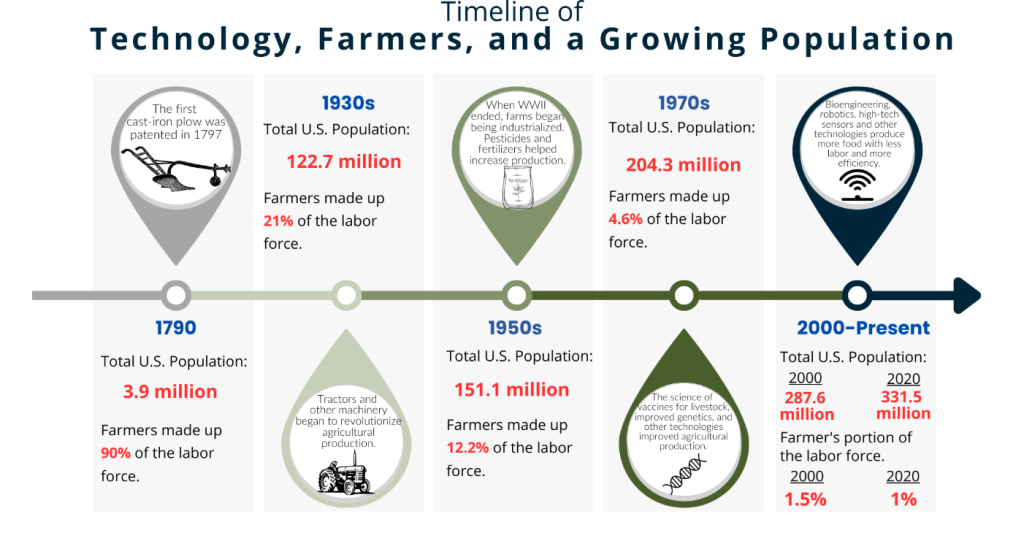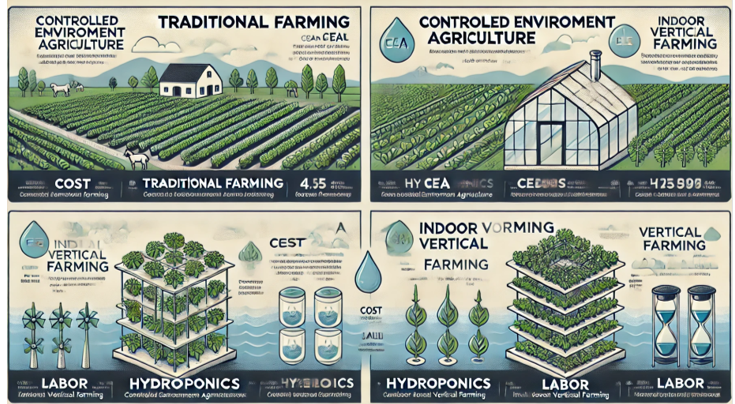2.3 | Capitalism and Free Markets in Agriculture
Anthony Farao
Learning Outcomes & Objectives
📌 Course Student Learning Outcomes 1: Students will be able to explain how economic principles relate to agriculture business management. Understand key concepts like scarcity, supply and demand, opportunity cost, and decision-making under risk in an ag-based context.
📌 Objective 1: Explain how economic principles relate to agriculture business management.
🌾 Introduction: Why Capitalism Matters in Agriculture
Capitalism shapes nearly every agricultural decision made in the United States today—from what crops are grown to how prices are set. It offers opportunity and innovation but also demands adaptability in a competitive marketplace. This section explores how capitalism and the free market system influence agricultural businesses at every level.
🏛️ What Is Capitalism?
Capitalism is an economic system where individuals and businesses—not the government—own and control the factors of production: land, labor, and capital. In this system:
- Producers decide what to grow or raise based on potential profits.
- Consumers influence production through purchasing choices.
- Prices are set by supply and demand, not by government mandate.
- Innovation and competition are rewarded with financial success.
📘 Agricultural Example: A farmer in California chooses to grow pistachios instead of cotton after noticing a rise in global demand and export prices.
📷 Suggested Image: Farmstand or packing shed with pricing labels – Alt text: Farmer setting prices at local farm market based on supply and demand.
⏳ History of Capitalism in Agriculture
Agriculture has not always operated under capitalist principles. Historically, land was controlled by nobility or governments. Over time:
- Land ownership transitioned to individuals, families, and corporations.
- Technological advances, such as the mechanized harvester, enabled large-scale production.
- Global trade and the open market created new opportunities—and new risks.
Exercises

🔑 Core Features of Capitalism in Ag Business

| Principle | Explanation | Agricultural Example |
|---|---|---|
| Private Property | Farmers and companies can buy, sell, or lease land and equipment. | A family farm invests in solar-powered irrigation. |
| Freedom of Choice | Producers and consumers make their own decisions. | A grower chooses to shift to organic strawberries. |
| Profit Motive | Financial gain encourages innovation and efficiency. | A dairy installs robotic milkers to reduce labor costs. |
| Competition | Agribusinesses strive to offer the best products at competitive prices. | A local CSA competes with national grocery chains. |
| Limited Government Involvement | Governments regulate safety and fairness but do not control markets. | A rancher follows USDA rules but sets pricing based on market trends. |
⚖️ Benefits and Risks of Capitalism in Agriculture
Capitalism in agriculture refers to a system where individuals and private businesses—not the government—make decisions about agricultural production, pricing, and investment based on market signals. This system allows flexibility, encourages innovation, and rewards efficiency. However, it also introduces risks tied to price instability, market inequality, and access to resources. Understanding both the advantages and disadvantages of capitalism in the ag sector helps future professionals make informed, strategic choices.
Benefits:
- Encourages innovation (e.g., drone tech, vertical farming).
- Responsive to consumer trends (e.g., organic, non-GMO).
- Greater efficiency through competition.
Risks:
- Market volatility: Prices for beef, milk, or wheat can drop suddenly.
- Barriers to entry: Capital-intensive industries can shut out small producers.
- Unequal access: Land, credit, and market access are not distributed evenly.
💬 Reflection Prompt: Does capitalism make agriculture more efficient or more vulnerable? How would your farm or business idea thrive—or struggle—in a free market?
📷 Suggested Image: Infographic: “Pros and Cons of Agricultural Capitalism” – Alt text: Chart showing innovation, risk, and inequality in a market-driven ag economy.
🌍 Capitalism vs. Other Systems: A Quick Review
There is no single way that societies organize their economies. Four primary systems are commonly referenced when discussing how decisions are made about what gets produced, how it gets made, and who receives the goods: capitalism, socialism, command economies, and mixed economies.
In a capitalist economy, individuals and private companies make most of the decisions. Ownership of land, labor, and capital is private, and production is guided by supply, demand, and the pursuit of profit. This system promotes competition and innovation but can lead to inequality and market instability.
In socialist economies, the government owns or regulates key industries and services. While private ownership may still exist, more public control is used to ensure broader access to essential services like healthcare, education, or food. Farmers may still own land, but they often receive subsidies, guaranteed prices, or state guidance.
A command economy is one in which the government controls all production and distribution. Decisions are made centrally—by committees or state agencies—not by individuals or markets. These systems tend to lack efficiency and innovation, though they may provide basic needs for citizens.
Most countries today operate as mixed economies, blending elements of capitalism with government regulation or public services. For example, the U.S. allows private farm ownership and market pricing, but also regulates food safety and provides disaster relief, crop insurance, and conservation incentives.
| System | Who Decides What to Produce? | Who Owns Resources? | Ag Example |
|---|---|---|---|
| Capitalism | Producers and consumers | Private individuals/firms | U.S. family farm competing in export markets |
| Socialism | Both government and producers | Mixed ownership | EU subsidies for dairy stability |
| Command Economy | Government controls all | Government | North Korean farm directives |
| Mixed Economy | Market-led with government regulation | Both private and public | U.S. farm with USDA crop insurance |
🎯 Learning Check
✅ Define capitalism and list its key components.
✅ Identify how capitalism affects decision-making in agriculture.
✅ Compare capitalism with socialism and command economies.
📥 Student Prompt:
💡 Summary: A System Built on Choice and Challenge
Capitalism in agriculture is dynamic. It promotes growth, efficiency, and consumer alignment—but also demands adaptability. Understanding how this system functions helps producers manage risk, invest wisely, and compete in a complex global market.
Media Attributions
An economic system based on private ownership of the means of production and their operation for profit.
